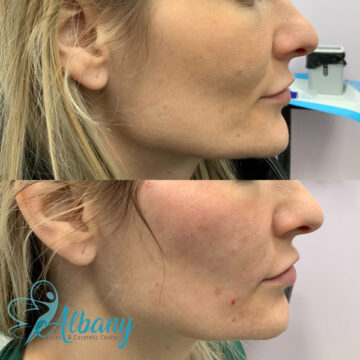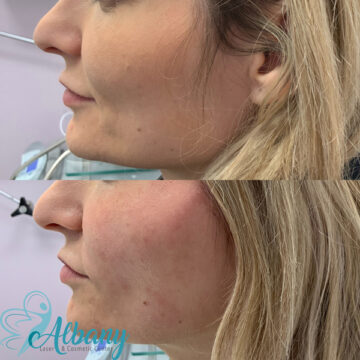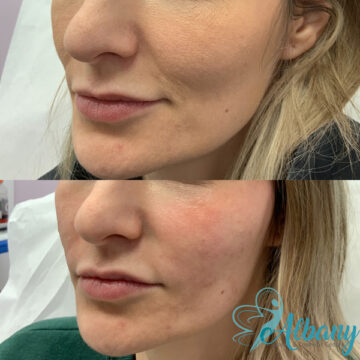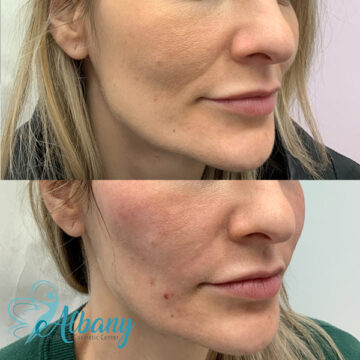platelet-rich fibrin PRF Edmonton
Platelet-rich fibrin, or PRF, represents the next wave in dermal fillers. It harnesses the power of a patient’s own blood to boost collagen production and foster cell regeneration. To create PRF, we take a small blood sample from the patient and use a centrifuge to isolate the platelets from other blood cells. Then, we inject these platelets into the treatment area. As a result, these platelets release growth factors that drive collagen production and cell renewal.

How PRF Works to Rejuvenate Your Skin
PRF utilizes a high concentration of platelets, growth factors, and white blood cells from your own blood. Unlike PRP, PRF is processed without anticoagulants, allowing it to form a fibrin matrix that releases growth factors over time. This natural process promotes collagen production, tissue regeneration, and overall skin improvement.
Why Choose PRF Over Traditional PRP?
PRF offers a more natural approach to skin rejuvenation compared to Platelet-Rich Plasma (PRP). With no chemical additives, PRF provides longer-lasting benefits due to the slow-release properties of growth factors. This method enhances tissue healing and collagen synthesis more effectively than PRP alone.
PRF Results: Check Out These Before and After Snaps!




See the power of Platelet Rich Fibrin (PRF) through our before and after photos! These snapshots capture the noticeable difference in skin quality, texture. Moreover, it highlights the effectiveness of PRF treatments at our Edmonton clinic. By comparing the before and after images, you can truly appreciate the potential of this natural procedure. Why just read about the results when you can see them for yourself!
PRF Treatment Infographic Summary
Treatment Preparation and Aftercare Timeline
3 to 7 Days Before (Preparation)
Avoid blood-thinning medications like aspirin and ibuprofen. Refrain from alcohol consumption and smoking. Follow a gentle skincare routine to avoid skin irritation before treatment.
Treatment Day (What to Expect)
Upon arrival, our team will conduct a consultation and prepare the treatment area. A simple blood draw is performed, and the PRF is processed and injected into the desired areas. The procedure is relatively quick, with minimal discomfort and no anesthesia required.
1 to 7 Days After (Immediate Aftercare)
Clients may experience mild swelling, redness, or bruising, which typically subsides within a few days. It's advised to avoid strenuous activities and direct sun exposure during the healing process. Follow-up care recommendations will be provided to enhance results.
7 to 14 Days (Ongoing Aftercare)
Most side effects should have resolved by this time. Continue to follow your personalized skincare routine and attend any recommended follow-up appointments to monitor progress.
3 to 6 Months (Long-Term Maintenance).
Results gradually improve over several months as collagen production increases. Periodic touch-up treatments may be recommended to maintain optimal results